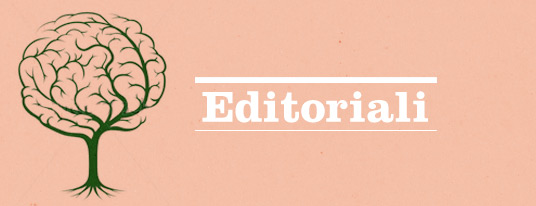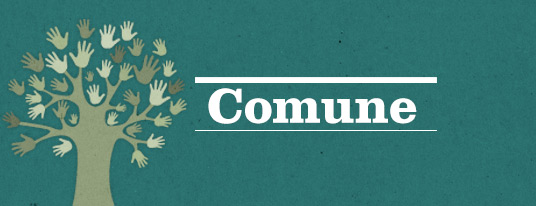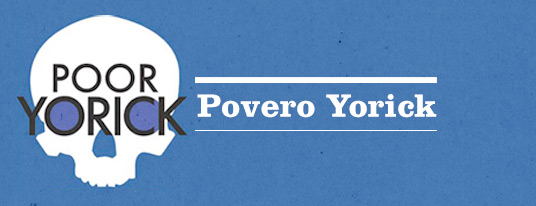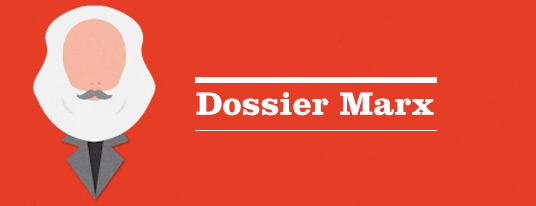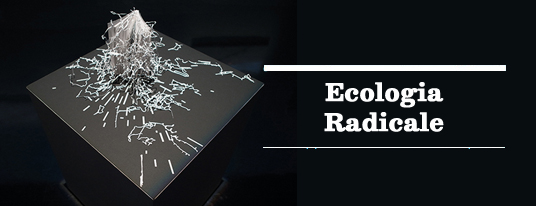di TIZIANA TERRANOVA.
Lecture for the Event ‘Six Contradictions and the End of the Present. Overexploited and Underpaid.’ Reina Sofia Museum, 12.9.2018 [qui]
Until mid-1990s the Internet was the domain of publicly funded scientific research – even when it was funding allocated by the US Department of Defense. In the mid-1990s, however, the decision to lift the commercial ban on the Internet explicitly unleashed market forces onto the entire sociocultural milieu of internetworking. This has been a qualitatively different process than the use of informatics and computer networks in the world of industry, commerce and finance which started already in the 1970s – a process that Manuel Castells described in the late 1990s as the rise of the network society. The Internet no longer represents simply the cultural medium of a more general turn to informationalism, but it has become the lab where a whole new kind of capitalism has been developed – something for which we have now many names, such as communicative capitalism (Jodi Dean), bio-cognitive capitalism (Carlo Vercellone and Andrea Fumagalli), and platform capitalism (Nick Srnicek), but which might be also characterized as computational. This is the kind of capital that it is identified with mega-corporations such Apple, Google, Facebook and Amazon, but also with companies bearing names such Airbnb, Uber , Lyft Deliveroo, Ali Baba, Ten Cent, Booking, Baidu, Ebay, Netflix, Spotify, Twitter, TripAdvisor and Zalando. These companies which operate by means of a cloud architecture where devices’ data are stored and computed in central servers and accessed through the Web or apps, mobilize a large but scattered labor force. While the numbers of official employees are often unfavorably compared to those of older giants such as Ford or IBM, they draw on informal networks of waged and unwaged labor engaged in of manufacturing, renting, selling, and coding, but also making photos and videos, writing comments and sharing content. Such companies could not operate without an extensive use of data, algorithms and artificial intelligence – which constitute a new mode of automation. This is producing that strange phenomenon of the proliferation and intensification of labor and a decline in employment. This phenomenon both evokes the possibility of a society where the intensity and fatigue of work is diminished without loss of income – and at the same time makes such society appear as a mirage in as much as the intensity of work increases and distribution of wealth becomes ever more unequal
In the late 1980s, an influential cultural marxist such as Fredric Jameson argued for the need to develop cognitive maps to chart the transformations of capitalism as it was leaving the material floor of the factory behind to set up shop in what was once called cyberspace. In the same years, working in exile, the now influential school of Italian Autonomist Marxism was developing concepts already introduced by means of workers’ inquiries and militant research in the 1990s, such as the social factory, immaterial labor and the multitude. Today, digital media critics and software studies scholars have also been engaging in effort to produce both cognitive maps and conceptual tools to keep track the vast economic and social transformation unleashed by the marketisation of the Internet. I am thinking for example about scholars such as Melissa Gregg, Benjamin Bratton, Angela Mitropolous, Ned Rossiter, Phoebe Moore, Nick Srnicek, Brett Nelson and Sandro Mezzadra and many others, with concepts such as the stack, the quantified self, the digital housewife, contracts and contagion, neo extractivism, platform capitalism, logistical media and so on. Thus we have a number of conceptual tools that have been developed to think about the transformation of capitalism and labor in the current conjuncture.
For the moment, however, being in a museum, I would like to foreground attempts to turn these kinds of conceptual maps also into visual maps. One of the recurrent themes that one can find in current critical research on the Internet, for example, is that we are faced with a drastic division between the smooth interfaces of the frontend which is where the ‘user’ acquires agency (and that are driven by the need to keep users’ engaged and measurable) and the back end which is where the work of monetization (or capitalisation) by means of actual sale of commodities (exchange value) or financial trade in data (return on investment) takes place.
In the 1980s and 1990s, the notion that network visualisations could actually help to grasp the complexity of systems – including capitalism – produced maps of ‘social networks’ such as interlocking directorates drawn first by artists such as Mark Lombardi – a project more recently taken up by Brian Holmes’s Counter-Cartographies with the Bureau d’Etudes. Today, however, the network appears to many as a ‘poor aesthetic medium’ to represent such complexity (I am thinking about Anna Munster’s critique of network aesthetics’ rendering of experience or Alexander Galloway’s notion that the aesthetic space of network is zero as they are all repetitive renditions of the same points-and-lines diagrams). There has thus been a turn away from network visualization towards different aesthetic forms.
I want to pick in particular on one very recent example, – that is the ‘anatomical map of an A.I. System’ [qui]. This is a map developed by a collaboration between Kate Crawford ( researcher at Microsoft and NYU in the US) and Vladan Joler (from the Share Lab at Novi Sad University in Serbia). The essay is an interesting exercise which brings together a political theorist and a visual artist in order to produce a political map of the extensive network of processes and relations underlying the operation of a simple consumer device such as Amazon Echo – and its Artificial Intelligence program Alexa. Aesthetically inspired by patents diagrams, it follows other visualisations by the Serbian Share Lab such as Facebook’s [qui]. As with many of such visualization, this map is so visually overwhelming that it’s currently printed as a huge artwork measuring 6 meters by 4 meters in the Victoria & Albert Museum in London as part of their new show on artificial intelligence. In a way, then, it kind of pushes visualization in the direction of a more tactile, immersive mode of cognition – possibly open to further transcodification, as usual with digital objects, into an app or a game or what used to be called hypermedia.
Crawford and Joler’s theoretical point is that the complexity of such networks is mostly invisible to most of us – in as much as we are confined to the level of users’ interfaces (the so-called front end), which are by definition smooth and opaque. Their map, resembling an integrated circuit, reconstructs the ways in which a device such as this which can perform a whole series of operations going from switching on the lights to searching the Internet to making a purchase on an e-commerce site, mobilizes a whole assemblage of human labor, biodata and non renewable resources. Such assemblage reveals the social pyramidization of society and the dramatic plundering of the earth’s non-renewable resources such as rare minerals. The pyramidazation of society is displaced also by means of an economic salary scale revealing the huge inequalities dividing a child miner for example at the bottom and Amazon CEO’s, Jeff Bezos at the top – as in the meme-able statement whereby ‘A child working in a mine in the Congo would need more than 700,000 years of non-stop work to earn the same amount as a single day of Bezos’ income’… The map thus foregrounds the concept of neo-extractivism making visible the ways in which contemporary capitalism mobilize both the deep geological time of the Earth, the accumulated time of biocultural memory and all kind of different forms of labor – both paid and unpaid.
Such political and visual mapping exercise, however, could have start from any of the many interfaces developed by companies such as the one listed above -as in the share lab map of Facebook. Whether it is uber or trip advisor, netflix or facebook, zalando or ali baba all kinds of visualizations could be built that would somehow refer to these assemblages of labor, data, and minerals that Crawford and Joler have abstracted.
What becomes evident by means of such map is the way contemporary computational capitalism involves the mobilization of the global as an economic space marked by a history of slavery, colonization, exploitation and enviromental devastation. Each one of these interfaces would take us into a space where a specific kind of subsumption of nature, labor and culture is accomplished. In a way, like with the famous Borges’ short story referenced by Baudrillard and in different way by Crawford and Joler, this map could become ever more complex if it also included all the different externalities produced by these networks: the side effects and unaccounted for costs of intensified rhythms of labor in Amazon warehouses or Foxconn’s factories; maps accounting for the emptying out of the city centres displaced by Airbnb-rented apartments; neurological long term damage caused by the proliferation of cellular telephony’s repeaters; and of course the long terms costs of e-waste and mineral extraction among others. Continuing to pursue visualizations of computational capitalism, that is, take us further and further into a world where environmental, social and political debts invisibly incurred by high tech corporations towards the planet and labor pile up – posing the question of who will pay this debt and how long it will take to repair this damage.
While all these efforts to map the current configuration of what can be called computational, communicative or platform capitalism tend to risk, however, albeit this is not true for all, is a certain temptation to give in to what can be called a ‘Black Mirror’ view of the future. I use the title of a popular Sci Fi series concerned with various dystopian scenarios of a technological world dominated by technology and capitalism to indicate the temptation to give in to the notion that the future has been definitely foreclosed. I would maintain that all attempts to think about contemporary capitalism need to keep open spaces which can disclose what might be moments of resistance and creativity. This is not to hang on to some kind of idealistic optimism (with Donna Haraway there is no point avoiding what she calls ‘the trouble’), but to find the energies and the visions to launch ourselves into the effort that it will take to keep open the option of a post-capitalist future.
As an important US queer theorists, the late Eve Kosofksy Sedgwick once put it,it is possibly in the intellectual ancestry of the left, in its debt to 20th century critical theory, to adopt what she called a ‘paranoid position’. Sedgwick’s use of the term paranoia was not pathologizing. As she put it, paranoid readings are readings which are especially concerned with the operations of power – and as such can provide very accurate and detailed maps of such operations. And yet, the risks of sticking to the paranoid position, that is in the exclusive focus on the construction of maps of power, is threefold: on the one hand, that of thinking ourselves into a position of powerlessness; secondly, to pose a model of labor as completely passive hostage of this kind of arrangement, forgetting that such economic models can also be considered as answers to desires for freedom and autonomy that also characterize the history of labor struggles; and finally of making invisible the myriad ways in which various forms of creative resistance – including the elaboration of lines of flight – are also part and parcel of the transformations outlined above.
I would thus like to suggest that it would be a worthwhile effort to construct maps and diagrams, concepts and memes, whereby maps of capitalism becomes also map where for each part of a diagram where a relation of power is expressed it is also possible to retrieve a point of resistance and a vector of desire. What happened if we learned to keep our eyes open – at each single point of what Donna Haraway once called the integrated circuits of the informatics of power – to the various kinds of resistances and desires that are expressed? What kind of perspective would emerge if we accounted also for all the strikes, all the acts of sabotage, all the attempts at counter-organizations which have also marked and continue to haunt the emergence of computational, platformed capital? What if we also kept open, without dismissing as illusions, all the dreams and aspirations that also mark, even when disappointed and betrayed, each act of participation in such economy? What if for every capitalist platform, as Trebor Scholz suggests, there could also be a corresponding cooperative platform, owned by workers, which materializes a different social universe of desires and ways of working? What if in the anatomical map of Alexa could be included in a kind of fractal way, also the act of resistance of the artificial intelligent device itself – as in the uncanny and satanic laughter which Alexa machines apparently started voicing in the middle of the night scaring users to death – in an uncanny version of Spike Jonez’s Samantha in his film Her? And for every mineral unearthed, as in the work by Iranian philosopher Reza Negarestani on petropolitics, a dark vengeful daemon would also be unleashed? Is there space in such maps for the domain of what black radical labor historians such as Robin G. D. Kelley have named ‘infrapolitics’ – that is the myriad acts of rebellion and sabotage that for example have marked the history of the black working class in the US? Can we make visible and connect the many form of resistance to the Airbnb-fication of city life? Or link in a worldwide map all proposed policies by socialist politicians (such as Jeremy Corbyn or Bernie Sanders) to use taxation from these corporations to fund health care for example? The whole movement of p2p commons-based production, alternative finance and platform cooperativism stems from desire to invert the signs of the current organization of digital labor – moving it towards democratic governance and common property. Beyond the hegemony of libertarian groups, it is important also to keep our eyes open to the extraordinary groups and collectives engaged in thinking and practicing new forms of economic organizations with and beyond the blockchain – including attempts to translate the insights of Marxist radical theorists of financialisation.
A final point that I would like to make is that even foregrounding or at least integrating our paranoid map of computational capital with maps of resistance and creativity as such is not enough. What escapes both diagrams, that is, it’s what, with Deleuze and Guattari, we might call the abstract machine that holds together and makes possible computational capital as cuch – and whose overcoming is necessary if the potential of new kind of noncapitalist futures is to become a reality. I am referring to neoliberalism – which I understand with Foucault not simply as a more extreme form of capitalism, but as a political rationality which has informed the organization of the action of governments since at least the late 1970s (with Thatcher, Reagan and Pinochet). If capitalism is not just an economic, but also a political and juridical reality, Foucault argued, it could not work without a political rationality which constitutes its abstract machine. Foucault and scholars who have developed his study of neoliberal authors (I am thinking for example in the UK about Will Davies) argued that neoliberalism is a political rationality anchoring itself on two models: the neoclassical market as a formal, ideal competitive mechanism that once installed allows for the instantiation of a dynamic process of allocation of scarce resources, which also produces rankings legitimated by competition (as in a sport league) and growth (which displaces all older forms of welfare); and on the other hand the enterprise and entrepreneur (or human capital) as social institutions and focus of subjectivation which make the market not only an economic model but a social reality. Foucault argued that liberalism first and neoliberalism later developed arts of government in a pragmatic trial-and-error kind of way – and that the left, on the contrary, tended to rely on books, and lacked its own distinct form of government. Neoliberal thinkers, in particular, as recently authors such as Nick Dyer-Witheford and Davies have pointed out, accused the one form of economic model that modern socialists focused on (planning) to be inadequate to the task of running large, complex and dynamic economies. This is the famous socialist calculation debate from the 1930s – recently fictionalized by the book Red Plenty. Hayek and von Mises thus argued that only the formal mechanism of the market could guarantee a kind of spontaneous calculation which did not rely on centralization – and which also constituted a modality of formation of the ‘soul’. Contemporary socialist political theorists who have engaged with such issues argues that the current explosion in data (drawn from various databases, but also continuously generated by a livestream of social data generated by social media and smart phones) and new forms of algorithmic intelligence allows for the creation of new kinds of models whereby new socialised models of the economy could be also generated. The entrepreneur is read in this context not as the only agent responsible for innovation and the dynamism of the economy but as part of a generalized continuum of social innovation – which, when succesful in a capitalist economy, s/he captures and capitalises. The possibility of innovation and economic participation thus escape both the model of the market and the figure of the entrepreneur – making data the product of the general common intellect of a networked population.
This is a very exciting field in as much as it promises not only a technical solution to the socialist calculation debate, but the actual possibility of experimenting with economic models and linking them to a new political rationality altogether – which, with Michael Hardt and Antonio Negri we might call a political rationality of the commonwealth – and new spaces of subjectivation. Based on these ideas, for example, Carlo Vercellone, Andrea Fumagalli and Stefano Lucarelli have suggested that an economy based on knowledge (including data) is an economy founded in what once was considered (and still is) the non-economic work of reproduction – such as carried out by working class and non-white women. Arguing that an economy that is oriented towards reproduction of human capacities as embedded in the environment and entangled with nonhuman elements, requires that research, health, education and care become the engine of the economy, they have proposed that the concept of commonfare – a grassroots, democratic reinvention of socialist welfare – could ground such political rationality altogether. These new scenarios, I would propose, in as much as they break with the current state of things, would require not only visualisations or memes, but also new narratives and new characters. I would invite you for example to consider the extraordinary return of long form story telling in contemporary network culture – as in the success of TV series (your own Casa de Papiel) but also in literature (as in Elena Ferrante, but not only). I have become convinced in fact that long form story telling has become a kind of antidote to the information overload that social media generate – and which in a way visualisations of computational capitalism risk to reproduce.
I now leave the floor to Trebor Scholz who can tell you more about the ways in which platform cooperativism is doing the actual work of countering computational capitalism with other economic models and other modes of subjectivation after my rather abstract speculations. Thank you for your attention.








